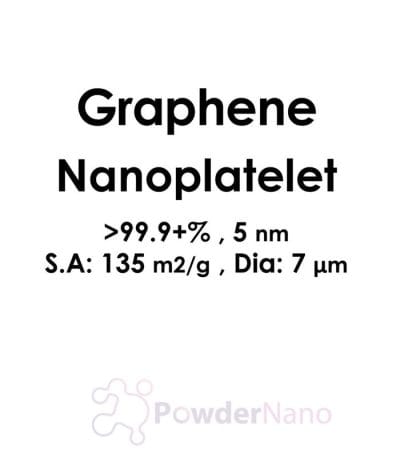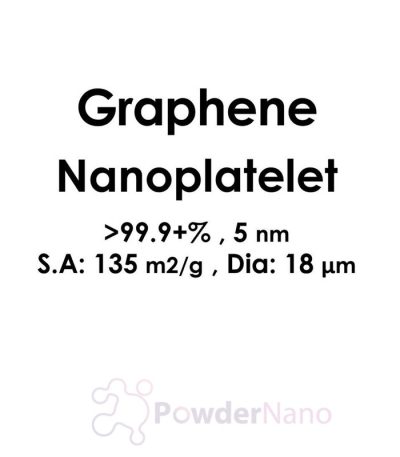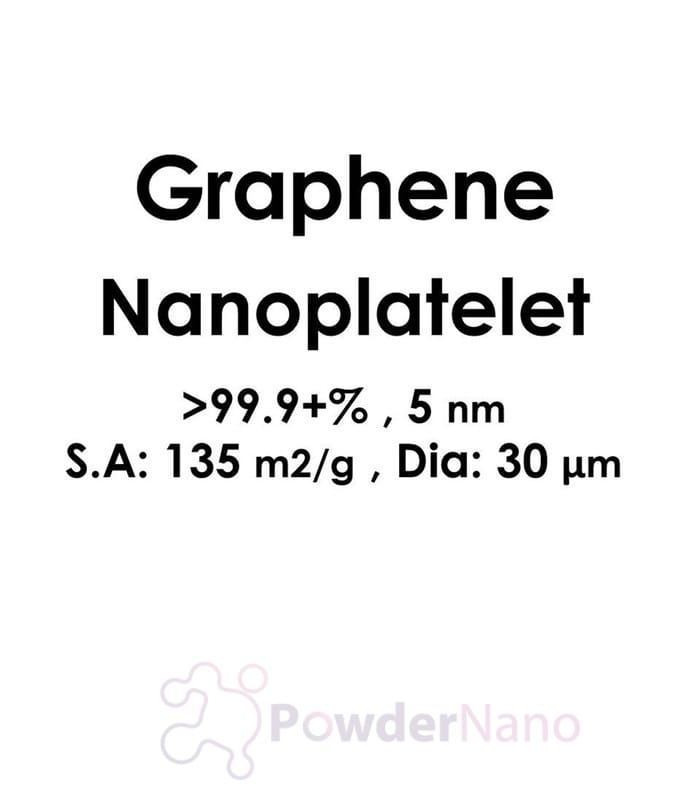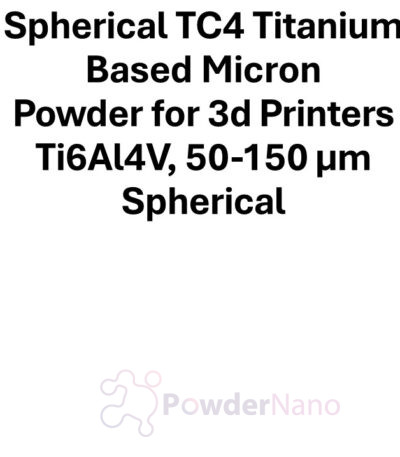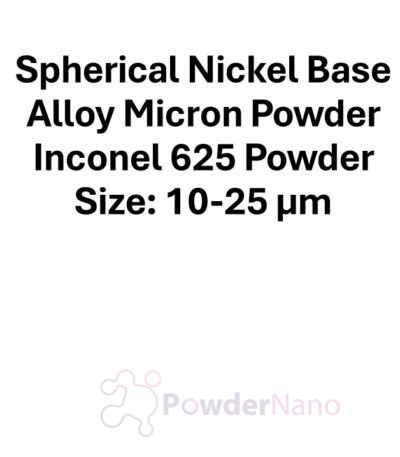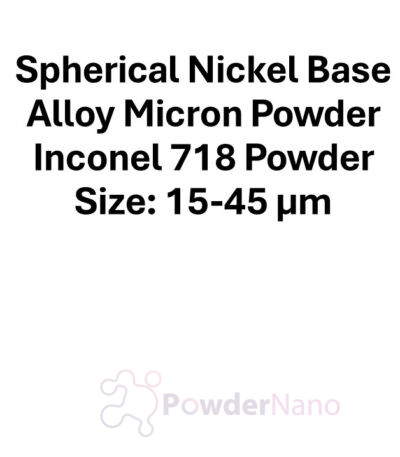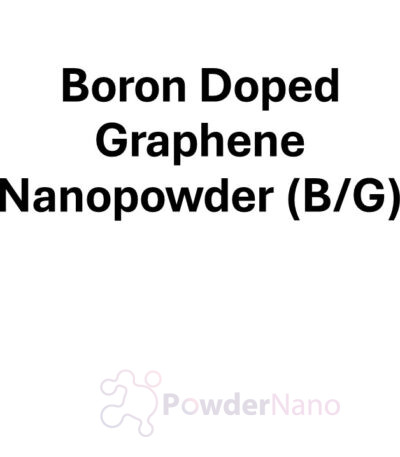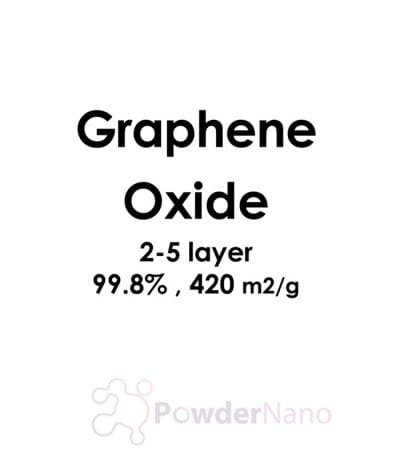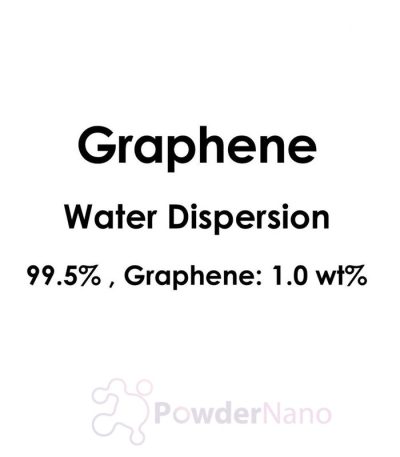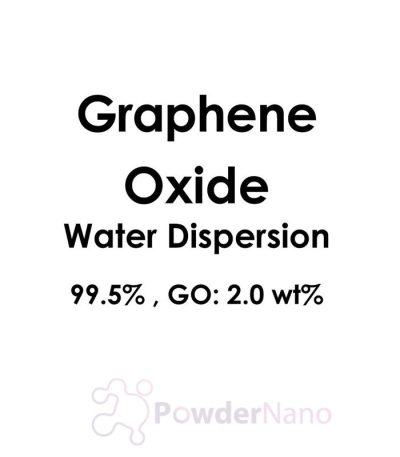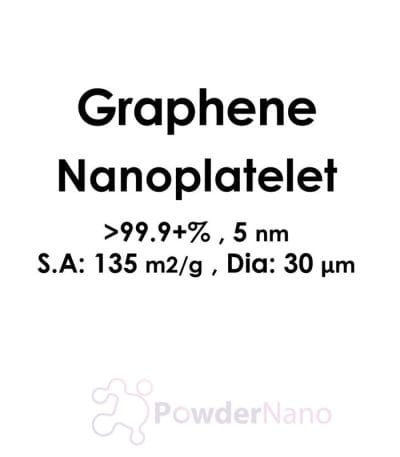Graphene Nanoplatelet (GNP)
Purity: 99.9+% | Size: 5 nm (thickness) | Surface Area: 135 m²/g | Diameter: 30 μm
Description:
Graphene Nanoplatelets (GNPs) are high-purity nanomaterials composed of multilayer graphene sheets. With a nanoscale thickness of 5 nm, a large lateral diameter of 30 μm, and a surface area of 135 m²/g, these materials exhibit exceptional thermal, electrical, and mechanical properties. They are designed for applications requiring enhanced conductivity, durability, and performance.
Technical Properties
- Purity: 99.9+%, ensuring negligible impurities for advanced applications
- Thickness (Size): 5 nm, providing excellent nanoscale flexibility and conductivity
- Surface Area (S.A.): 135 m²/g, offering sufficient active surface area for catalytic and energy applications
- Diameter (Dia.): 30 μm, enabling uniform dispersion in polymeric and composite systems
- Thermal Conductivity: ~3000 W/mK, offering superior heat dissipation
- Electrical Conductivity: Exceptional electron mobility for high conductivity applications
- Mechanical Strength: Tensile strength up to 130 GPa for robust material enhancement
- Stability: Chemically inert and thermally stable under diverse environmental conditions
- Compatibility: Easily dispersible in polymers, resins, and solvents for a range of uses
Applications
- Energy Storage and Conversion
- Enhances lithium-ion battery and supercapacitor performance by improving charge storage, cycling stability, and conductivity
- Applied in fuel cells and other renewable energy systems for enhanced efficiency
- Thermal Management
- Used in thermal interface materials (TIMs) for efficient heat dissipation in electronic devices
- Improves thermal conductivity in adhesives, coatings, and composites
- Polymer and Composite Reinforcement
- Strengthens tensile properties, elasticity, and thermal stability in polymer and composite materials
- Suitable for lightweight and durable materials in automotive, aerospace, and construction industries
- Electronics and Sensors
- Integrated into conductive films, inks, and printed electronics for advanced electronic devices
- Plays a significant role in the development of sensitive and efficient sensors for gases, chemicals, and biological materials
- Catalysis
- Acts as a catalyst or support material for chemical reactions, including hydrogen evolution and oxygen reduction
- Provides a large active surface for enhanced catalytic performance
- Coatings and Additives
- Enhances anti-corrosion, anti-static, and wear-resistant properties in coatings
- Improves lubricity and performance in industrial oils and greases
- Biomedical Applications
- Explored for drug delivery systems, biosensors, and tissue engineering due to its biocompatibility and functionalizable surface
Storage and Handling
- Storage Conditions: Store in a tightly sealed container in a cool, dry, and dark environment to prevent degradation and contamination
- Safety Precautions: Use appropriate personal protective equipment (PPE), including gloves, goggles, and a dust mask, to avoid inhalation or skin contact. Handle in a well-ventilated area to prevent nanoparticle dispersion
